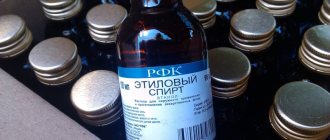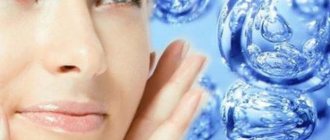Home » Miscellaneous » Water ozonation: benefits and harms
Ozone is a strong oxidizing agent, thanks to which drinking water can be thoroughly purified. Today, ozonation of water, the benefits and harms of which will be discussed below, remains the most effective way to disinfect water. But, like any method, ozonation has its advantages and disadvantages. There are significantly fewer of the latter, among them: the high price of ozonizers and the short-term effect of ozone.
Water saturated with ozone does not spoil for a long time. It can be used not only for drinking, but also for washing, watering plants, filling aquariums, etc. Under the influence of ozone, water is saturated with oxygen, which, in turn, has a beneficial effect on the human body at the cellular level. Over a short period of time, the water is saturated with oxygen and disinfected. The cleaning procedure is short-term. If you have a home ozonizer, the water obtained by ozone purification can be consumed immediately after the procedure, although experts recommend waiting a few minutes before taking it so that the ozone is completely converted into oxygen.
During the process of ozonation, all unpleasant impurities and foreign odors are removed from the water, and the taste of the water is significantly improved. During ozone treatment, the acidity of the water remains at the same level.
What are the benefits and harms of water ozonation? Opponents of the method argue that ozonation is not as harmless as it seems. Let's try to understand this issue.
What is ozone and ozonation
First, a little theory.
Ozone is a gas that is most often produced in nature by lightning. But it is also known that it can appear due to solar radiation or in the electromagnetic fields of power transmission line cables.
At the moment when lightning appears in the sky, oxygen (O2) is converted into ozone (O3) in its discharges. It is thanks to him that after a thunderstorm we smell freshness.
Ozone destroys all known viruses, bacteria, spores, etc. There is not a single harmful microorganism in the world that could survive after contact with ozone. This also applies to the COVID-19 virus (coronavirus).
Ozonation is the treatment of a room with ozone to disinfect and destroy bacteria and viruses that are dangerous to human health. For these purposes, special ozonizers are used. Such devices, under the influence of high-frequency and high-voltage discharges, convert oxygen into ozone.
Almost everything can be ozonized:
- various surfaces and air
- food and water
- shoes and clothes
- car showrooms, etc.
Ozonation is even used to disinfect operating rooms. Because ozone is tens of times more effective than a quartz lamp.
Now let's move on to the main topic: the benefits and harms of ozonation.
Ozonizer device
This is a small device that is designed to ozonate rooms and materials, such as water. Such devices differ from each other in the volume of gas released. Before using the ozonizer, you must carefully read its operating instructions. In addition, the method for producing ozone is different - using electrical pulses or from oxygen. Overall, this equipment is very easy to use. For this purpose, it is equipped with a timer and a start/deactivate key.
Ozonation of indoor air
Ozonation of the room is the procedure that we carry out most often. It allows you to clean surfaces and air from harmful bacteria and unpleasant odors.
The benefits of air ozonation
Let's start with the pleasant things. Let's talk about the benefits of air ozonation. And it is as follows.
Ozonation of indoor air allows you to:
- Effectively remove any unpleasant odors: dampness, burning after a fire, tobacco, pet or human urine, corpse odor, etc.
- Disinfect the room - kill harmful and hazardous viruses, bacteria, microbes and fungi. This effect is achieved due to the fact that ozone is 300 times stronger than chlorine.
- Sterilize surfaces - residual ozone kills various microorganisms on any surface. To date, there is not a single bacteria or virus that can survive contact with ozone.
- Return pleasant and fresh air to the room, as deodorization is performed using ozonation.
Ozonation helps clean the air from pollutants that enter the room from the street. Destroy harmful substances released by construction and finishing materials and during the combustion of household gas. And also eliminate human waste products from the air: carbon dioxide, amines, ammonia and other substances released from our body.
Harm of air ozonation
No matter what positive effect ozonation has on health, ozone is a toxic gas of the first hazard class. At high concentrations it is superior to bleach.
Ozone can be harmful to health if safety precautions are neglected during ozonation. Work must be performed in a special respirator that protects the respiratory system and eyes. And no one should be in the room, including pets (except for fish).
If you ignore safety precautions, the following problems may occur.
- Eye irritation: watery eyes and redness.
- Respiratory irritation: Chest discomfort may occur.
- The occurrence of diseases in domestic plants is due to prolonged contact with high concentration ozone.
Ozone can also destroy rubber objects: seals of plastic windows, refrigerator doors, entrance doors, etc. In some cases, oxidation of certain metals is possible.
Use of ozone for air purification
Ozone is a toxic gas , high concentrations of which can cause painful death. However, in small quantities it is capable of efficiently and quickly disinfecting water, air and food. It occurs as a result of a reaction that occurs when oxygen is exposed to an electrical impulse. This process can be observed during a thunderstorm. There is a persistent smell of ozone in the air.
Ozone is widely used to disinfect medical equipment and devices . When used for preventive purposes, it can strengthen the functioning of the immune system, improve blood circulation and promote better absorption of oxygen.
It has been proven that upon contact with the cells of the human body, ozone forms substances that destroy all known viruses and pathogenic bacteria.
Ozonation of water
Now let's talk about water ozonation. Is it safe to drink, and is there any harm in it?
Benefit
Ozonation of water:
- Saturates it with oxygen - the volume of oxygen increases almost 12 times. This is good for our body.
- Destroys harmful microorganisms, viruses, pesticides, chlorine, detergent residues, etc. That is, it makes the water as clean and safe for health as possible.
- Eliminates unpleasant taste or odor - relevant for tap water.
- Maintains normal water acidity - PH=7.5-9.0.
Ozonated water is much healthier and safer than tap water. Because even with boiling it is impossible to achieve such a high cleansing effect as with ozonation.
Harm
Ozonated water can only cause harm if the dosage of ozone is exceeded. Otherwise, such water is completely safe and healthy for consumption.
You can drink ozonized water approximately 1 hour after the procedure - within 30 minutes the ozone will disintegrate and does not pose any health hazard.
How does air purification work?
After the formation of ozone molecules, the device releases them into the air. Once the gas reacts with the pollutant molecules, it destroys their natural structure.
Ozonation is used for the following purposes:
- to ensure sterilization of warehouses and cold rooms;
- for high-quality air disinfection;
- to eliminate unpleasant odor;
- for sterilization of instruments in medical institutions;
- to ensure long-term storage of food products.
Ozonation is most often used by doctors. With the help of gas, wound healing is accelerated, it helps to overcome obesity, get rid of signs of cellulite, and restore immunity. But experts recommend caution in this matter, since there is no verified scientific evidence indicating the effectiveness of ozonation measures in the treatment of diseases. This is especially true for traditional healers, who often release ozone under the skin, into joints or blood, which is extremely dangerous.
The industry produces two variants of devices. Household ozonizers are used in small rooms because they produce a very limited amount of ozone. These devices make it possible to disinfect the air in homes, drinking water with food, bedding, our clothes, and furniture. Industrial installations are used for disinfection of warehouses, food processing, removal of chemical residues and pesticides.
So is ozonation harmful or beneficial?
Certainly useful. Because this procedure is aimed at protecting your health from viruses and microbes that can cause various diseases, sometimes very serious ones.
Ozonation can be harmful if it is carried out by a person without experience and ignores all safety rules.
For example, if ozonation is carried out without a special mask or respirator that protects not only the respiratory organs, but also the eyes, then ozone intoxication cannot be avoided. The same applies to carrying out ozonation indoors when there are people and pets there.
The main rule: carry out work only in PPE, there should be no people or pets in the room, and after the procedure - 2-4 hours later - it must be ventilated.
To avoid the unpleasant effects of ozonation, entrust this work to experienced professionals.
Call us - our specialists will safely and efficiently ozonate your apartment, house or commercial property in St. Petersburg. Share the article on social media. networks
Types of ozonizers and their properties
There are currently two types of ozone producing devices that are popular in use. Industrial ozonizer is widely used for the following purposes :
- Disinfection of water on an industrial scale.
- Food processing, destruction of pesticides and chemical compounds.
- Ozonation of industrial premises of livestock farming from harmful viruses.
- Disinfection of warehouses for storing agricultural products.
- Ozonation of greenhouse plants.
- Disinfection of medical equipment.
- Removal of rodents and small pests.
- Disinfection of crowded places during the spread of epidemics of various diseases.
- Elimination of the harmful effects of materials used in repair or construction.
- Air purification in a personal car.
I saw an announcement on a pole today - “Ozonizer is the best wedding gift!”, of course, I smiled. But, if you think about it, there is probably some truth in this - a household ozonizer will really improve the life of any family and become “the best gift.”
I decided to write about the benefits of an ozonizer for home and family, since now “the flu is spreading,” infections are coming from all sides, and the ozonator, in my opinion, is one of the excellent tools for disinfecting the air and destroying harmful microorganisms in a house where there is a sick person. And this device has a lot of other advantages, again, in my opinion and according to my personal experience in using this device (more than 5 years of experience). Well, you also need to know the “harmful” aspects, because ozone is a strong oxidizing agent and must be used carefully. There is nothing complicated, but you still need to have a certain understanding of ozonation issues.
What are the benefits and harms of ozone...
1. What is known about ozone today?
Ozone (comes from the Greek ozon, which means “smelling”) is a blue gas with a pungent odor, a strong oxidizing agent. Molecular formula O3. 2.5 times heavier than oxygen. In household appliances (ozonizers), ozone is produced using an electrical charge from the air. In medical ozonizers - from pure oxygen. In everyday life, its main use is disinfection, disinfection (of water, air, food, household items, etc.)
2. Where does ozone come from in nature?
OZONE is formed from molecular oxygen (O2) during an electrical discharge (after a thunderstorm with lightning) or under the influence of ultraviolet radiation. Oxygen forms ozone when a ray of sunlight hits a drop of water. Where the oxygen content in the air is high, we can most often smell the characteristic smell of ozone - in forests, near waterfalls, near large accumulations of water, after a thunderstorm.
3. After a thunderstorm, we feel especially fresh and clean air. Why?
Ozone is able to clean the air at the moment of its formation, since all impurities in the air are oxidized under its influence. The air is disinfected and acquires a characteristic “fresh” smell - the smell of a thunderstorm. This odor occurs at ozone concentrations in the air of about 10%.
4. How the ozonosphere affects our lives on a planetary scale.
At an altitude of approximately 10 -50 kilometers above sea level, a concentration of ozone is formed in the atmosphere. This air layer is called the ozonosphere. Ozone is a protective barrier for the entire planet and for humans, including. It protects us from harmful ultraviolet rays and cosmic radiation. Life on our planet became possible thanks to ozone, which forms additional oxygen and makes the air composition suitable for life on land.
5. How long has ozone been known to science and what is its conscious use by humans?
Ozone was first described in 1785. Dutch physicist Mac Van Marum. In the mid-19th century, the first technical installation for purifying drinking water using ozone was created - in fact, the first ozonizer was invented. So science has found the use of ozone as a powerful water disinfectant for hygienic purposes. Currently, 95% of drinking water in Europe is treated with ozone. Ozone water purification is also widely used in the USA and Canada. In our country, ozone is also widely used both for post-treatment of wastewater and for deep purification of water in treatment facilities, swimming pools, etc. In medicine, since the First World War, ozone began to be used as an antiseptic. They were used to treat purulent wounds, infections, tuberculosis and a number of other diseases. Currently, ozone has also found its use in everyday life - as an effective water and air purifier and food disinfectant. And also a whole direction in medicine and cosmetology has been created, called ozone therapy.
6. Many people are concerned about the safety of air purified by an ozonizer? Is ozone safe and can you breathe ozonated air?
Concentrated ozone is indeed not safe. It is poisonous in high concentrations. But household ozonizers produce ozone in concentrations that are safe for the body and, moreover, their instructions clearly state that during ozonation it is better for people to leave the room, and after ozonation it needs to be ventilated. Ozone is a strong oxidizing agent. Here lie its positive and harmful properties. By ozonizing the air, we kill harmful bacteria, viruses and other microorganisms found in it. After this, we ventilate the room from excess ozone and can breathe clean air completely safely. Ozone quickly breaks down into harmless compounds in both air and water. In addition, ozone has a sharp, characteristic odor; its concentration in the air will always be felt by our senses. At the same time, the safe ozone concentration threshold (MAC) is almost 10 times higher than our sensitivity to the smell of ozone. Therefore, we will hear any excess of ozone content in the air around us with our nose and it will be safe for our body!
7. Why are different concentrations of ozone needed?
High concentrations of ozone are precisely what are used for powerful disinfection and sterilization of everything. And low concentrations are used for healing, for example, they ozonize water to wash wounds and skin lesions, ozonize ointments and oils to increase healing and regenerating properties.
8. Why does ozone kill viruses?
Ozone suppresses (inactivates) the virus both outside and inside the cell, partially destroying its shell. The process of its reproduction stops and the ability of viruses to connect with the cells of the body is disrupted.
9. How does ozone affect other microorganisms?
Ozone, since it is a strong oxidizing agent, can damage the cell membrane of any microorganisms, for example, yeast. It is noted that after exposure to ozone, these microorganisms become more sensitive to antibacterial therapy (antibiotics). Ozone is a real and very effective “killer” of bacteria, viruses, fungi and protozoa! It is in the gaseous state that it leads to the death of almost 100% of Escherichia coli, streptococci, mucobacteria, staphylococci, Escherichia coli and Pseudomonas aeruginosa, Klebsiella and other microorganisms in just 5-20 minutes of exposure at the proper concentration (from 1 to 5 mg/l)
10. How does ozone interact with inorganic and organic substances?
In the process of ozone oxidation reactions, oxygen, water, carbon oxides and higher oxides of other elements are formed. All these products do not pollute the environment and do not lead to the formation of carcinogenic substances. And this distinguishes ozone favorably from chlorine and fluorine compounds, which were previously used to disinfect drinking water!
11. Frequently asked question: the air is disinfected using ozone and all harmful microorganisms are killed. Is this air safe for humans?
Ozone concentrations created by a household ozonizer lead to the formation of harmless compounds in residential areas. As a result of ozonation of the room, the oxygen content in the air increases and the cleaning of viruses and bacteria occurs. Ozone itself quickly dissipates into the air as a result of room ventilation and natural decay reactions. Thus, ozonated air is not only harmless, it becomes more saturated with oxygen and purified of harmful impurities, which cannot but have a positive effect on human health!
12. Is it possible to find out more precisely what compounds and impurities are formed in the air of the apartment as a result of the operation of the ozonator?
The air contains many impurities, some of which react with ozone and form harmless substances. Most of them break down into carbon dioxide, water and free oxygen. In some cases, inactive (harmless) compounds (oxides) are formed. And some of the impurities do not enter into chemical reactions with ozone at all and remain in the same state as they were before ozonation. These are the so-called non-reagent substances - oxides of silicon, calcium, titanium, etc.
13. Is it necessary to ozonate the air in air-conditioned rooms?
Air conditioners tend to reduce the oxygen content in the air. But they do not remove harmful impurities from the air at all. Worse, in old air conditioners, with filters that have not been changed for a long time, such air additionally and repeatedly increases its harmful effects; harmful microorganisms, spores of fungal infections, mold, etc. multiply in dirty filters. The air in air-conditioned rooms must be disinfected.
14. Do the air conditioners themselves need to be disinfected and can this be done using household ozonizers?
Certainly. It is advisable to do this regularly.
15. Do ozonizers help remove odors from tobacco, varnish, paint, etc. in an apartment?
Ozonizers cope with these tasks perfectly! If the odors are strong and old, ozonate the room several times, combine ozonation with wet cleaning, the effect will be even better!
16. What concentrations of ozone are harmful to bacteria and fungi in home air?
When using ozone for disinfection, the concentration of ozone in the air can reach 10 mg/m3 or more. The effect is particularly strong on Escherichia coli, salmonella, staphylococcus, candida, and aspergillus.
17. Are there any studies on the effects of ozonated air on humans?
In a series of articles published in 1976. in the journal “Nature” (health authority of the USSR), a number of important information and facts from studies of the effects of ozone are provided. In particular, an experiment is described that was conducted over 5 months with two groups of people - control and test. The air in the room of the test group was filled with ozone with a concentration of 15 ozone particles per 1000000000 air particles. All subjects noted good health and the disappearance of irritability. Doctors noted an increase in oxygen levels in the blood, a strengthening of the immune system, normalization of blood pressure, and the disappearance of many symptoms of stress.
18. Isn’t the concentration of ozone in modern household ozonizers harmful to health?
The ozone concentrations created by household ozonizers suppress viruses and microorganisms, but do not damage the body's cells, because Ozone does not damage the skin. Healthy cells of the human body have natural protection against the damaging effects of oxidation (antioxidant). In other words, the action of ozone is selective in relation to living organisms. This does not preclude the use of precautionary measures. During the ozonation process, staying in the room is undesirable, and after ozonation the room should be ventilated. The ozonizer must be placed in a place inaccessible to children or it must be ensured that it cannot be turned on. It is necessary to exclude the possibility of contact of concentrated ozone (at the outlet of the device) with the mucous membranes of the respiratory tract. Simply put, you should not breathe directly the ozone coming out of the ozonator tube. If you simply stay in the room where the ozonizer is working, you will not suffer any harm to the respiratory system. But for safety reasons (according to the instructions for household ozonizers), it is better to leave the room during ozonation.
19. How do different ozonizers differ in performance?
The performance of ozonizers depends on the concentration of ozone produced by a particular device. The higher it is, the larger the volume of the room can be ozonated. On average, a productivity of 400-600 mg/hour is considered normal, but there are also more high-performance devices. When choosing, you just need to take into account your goals (what exactly will you ozonate - huge office premises or small living rooms) and the expected volume of processing. Ozone is an unstable gas; it decomposes quickly, so the concentration of ozone strongly depends on the time of treatment of the room, its volume, humidity and temperature in it. For each device, data on the volume of ozone it produces is always indicated in the technical data sheet.
20. What concentration of ozone in the air is considered safe for humans?
Ozone concentrations in the range of 0.5 - 2.5 РРm (0.0001 mg/l) are considered safe.
21. Ozonation of water - why is it necessary?
Water can be ozonated to remove dangerous and harmful infections, bacteria, viruses, etc. from it. (for disinfection). It also normalizes the color of the water and eliminates unpleasant and foreign odors. At the same time, the water becomes more saturated with oxygen. Ozonated water can be safely consumed raw, without boiling or additional filtration.
22. Why is water ozonation preferable to other purification methods? What does ozonation do?
When we ozonate water, the ozone produced does not add anything to it. Ozone simply neutralizes all harmful substances and microorganisms, and itself disintegrates after some time... At the same time, the mineral composition and pH remain unchanged. This does not happen with chlorination and fluoridation of water. 2. Ozone is a very strong oxidizing agent. Therefore, its disinfecting properties are extremely high. It is most effective at neutralizing pathogenic microbes in water. 3. In water treated with ozone, all organic substances disintegrate, thereby preventing the proliferation of microorganisms. 4. Ozone destroys most chemical compounds in water without forming compounds harmful to the body. These are substances such as pesticides, herbicides, petroleum products, detergents, sulfur and chlorine compounds, which are carcinogens. 5. To remove metal impurities (iron, magnesium, etc.) from water, it is enough to ozonate the water and drain the resulting residue. Metals are perfectly neutralized in ozonated water, forming a precipitate that simply needs to be removed. Therefore, the water changes color and becomes more transparent. 6. When ozone breaks down, it forms oxygen molecules. This significantly improves the taste and healing properties of water.
23. What is the acidity of water that has undergone ozonation?
Water that has undergone ozonation has a slightly alkaline reaction pH = 7.5 - 9.0. This water is recommended for drinking.
24. How much does the oxygen content in water increase after ozonation?
After ozonation, the oxygen content in water increases almost 12 times!
25. How quickly does ozone decay in air and water?
Ozone decays quite quickly in the air. After just 10 minutes, its content in the air decreases by 2 times. Ozone breaks down into oxygen and water. In water (depending on the temperature and the presence of impurities), ozone disintegrates by half within half an hour, forming a hydroxyl group and water. That is, drinking raw water half an hour after ozonation is already quite safe, but I would advise letting it sit for at least an hour so that all the sediment collects at the bottom of the container. By the way, the sediment is almost invisible to the eye; basically, it remains on the walls of the jar (I always ozonate water in three-liter glass jars), but still I always try to pour out the “bottom” layer of water, although to the eye it is indistinguishable from the entire volume water.
26. How does heating water affect its oxygen content?
If water is heated, the oxygen content in it decreases
27. What determines the concentration of ozone in water?
Ozone concentration depends on impurities, temperature, acidity of water, material and geometry of the container.
28. Does ozone remove nitrates and “chemicals” from fruits and vegetables?
Device sellers say yes. But for effective processing there will be little point in ozonating, for example, a whole apple. This way we will only disinfect its surface. If you cut it into pieces and place it in water, it is possible that some of the nitrates will be neutralized. But I didn’t find any evidence of this. Although, if you focus on taste sensations, the taste of some ozonated products actually improves. But the question is - does this happen due to the removal of nitrates? — remains open to me.
29. Why is it beneficial to drink oxygenated water?
The use of ozone increases the consumption of glucose by tissues and organs, increases the saturation of blood plasma with oxygen, reduces the degree of oxygen starvation, and improves microcirculation. Ozone has a positive effect on liver and kidney metabolism. Supports the functioning of the heart muscle. Reduces breathing rate and increases tidal volume.
30. What is a household ozonizer intended for?
- disinfection and deodorization of air in residential premises, bathrooms and toilet rooms, change houses, closets, refrigerators, etc.;
- food processing (meat, fish, eggs, vegetables and fruits);
- improving water quality (disinfection, oxygen enrichment, elimination of chlorine and other harmful impurities);
- home cosmetology (elimination of dandruff, acne, gargling, brushing teeth, eliminating fungal diseases, preparing ozonated oil);
- care for pets and fish;
- watering indoor plants and treating seeds;
- whitening and adding color to linen;
- shoe processing.
31. What is the effect of using ozone in medicine?
Ozone practically sterilizes water and any surfaces of objects that it affects in the required concentration. It is often used for disinfection - antibacterial, antifungal, antiviral treatment. Ozone activates and normalizes a number of biochemical processes. The effect obtained from ozone therapy is characterized by: suppression of toxins, both external and internal, improvement of metabolic processes, increased blood supply to organs, improved blood flow, improved tissue respiration; increasing immunity, normalizing the process of lipid peroxidation (fat metabolic processes), strengthening the body's antioxidant defense, reducing the severity of inflammation, analgesic effect
32. Why does ozone improve human immunity?
By increasing the supply of oxygen to the blood, cellular and humoral immunity increases. Phagocytosis is activated, the synthesis of interferons and other nonspecific systems of the body is enhanced.
33. How does ozonation affect metabolic processes?
The use of ozone increases the consumption of glucose by tissues and organs, increases the saturation of blood plasma with oxygen, reduces the degree of oxygen starvation, and improves microcirculation. Ozone has a positive effect on liver and kidney metabolism. Supports the functioning of the heart muscle. Reduces breathing rate and increases tidal volume.
34. Ozone is formed during welding work and during the operation of a photocopier. Is this ozone harmful?
Yes, it is harmful, since it creates dangerous impurities. The ozone produced by the ozonizer is pure and therefore harmless (if all instructions for using the ozonizer are followed)
35. Is there a difference between industrial, medical and household ozonizers?
These devices differ in the power of ozone production, that is, in the final concentration of ozone. Medical and household ozonizers are similar in performance indicators, but medical ones are designed for longer continuous operation. There are also models that produce ozone from pure oxygen. Household ozonizers produce ozone from the air.
36. What are the comparative characteristics of disinfection when using ultraviolet units and ozonizers?
Ozone, in its properties of destroying bacteria and viruses, is 2.5 - 6 times more effective than ultraviolet rays and 300 - 600 times more effective than chlorine. Moreover, unlike chlorine, ozone even destroys worm cysts and herpes and tuberculosis viruses. As a result, ozonated water is safe, clear and tastes good.
37. Is it possible to disinfect dishes using ozone?
Certainly. You can disinfect any surfaces and objects. A household ozonizer is especially useful for processing and disinfecting children's dishes and during epidemics of viral diseases, when the sick person is among healthy people, and his dishes must be treated.
38. What materials should utensils for ozonation be made of?
Very important question! Metals, rubber, aluminum can enter into additional reactions with active oxygen and form harmful impurities. Therefore, the dishes must be “neutral” to ozone. Glass, ceramic, wood, plastic, enameled (with intact enamel). Since sediment regularly remains on the dishes, formed under the influence of ozone from chemical compounds in the water, the dishes must be thoroughly washed after each use. And do not use the entire volume of water (leave a layer of water with sediment at the bottom of the dish), since sediment may form at the bottom. The sediment should be poured into the sink and not used for drinking.
39. If you cannot leave the room during ozonation, how can you “not inhale” ozone?
You can open the window. You can breathe through a damp cloth pressed against your nose and mouth.
40. Shoe processing. Is it possible to get rid of persistent odor?
In 10-15 minutes you can rid your shoes of all odors. Shoes must be placed in a sealed plastic bag and ozonated in the bag, thereby creating an increased concentration of ozone. Not only will the smell be removed, but also the fungus, which is often the cause of foot odor. This way you can disinfect any objects (cabinets, clothes, food, etc.)
41. Which ozonizers are better not to use so as not to harm yourself?
The device is electrical and if it has damage to the integrity of the body or wires, it is better not to plug it into the network. Otherwise, these devices are safe. But read the instructions for your specific device, all safety warnings are given there.
42. How is ozone produced in the device?
Ozone is obtained from air that is sucked in by the pump. An electrical discharge occurs and the oxygen molecules contained in the air are separated into individual molecules, and then recombined to form triatomic ozone.
43. How long do ozonizers usually last? Do expensive models have an advantage?
The service life of the ozonizer is from 5 to 10 years, provided it works for no more than 6 hours a day. Continuous operation time should not exceed 30 minutes. The break between switching on is at least 10 minutes. As a rule, the service life does not depend on the cost of the model. The device is very simple, and it is known that “the simpler, the more reliable!” It has been tested by many years of operating experience - if the device worked properly in the first weeks, it can work quietly for another 10 years or even more... The price depends on additional functions, ozone production capacity and the ambitions of the sellers... At least in my practice, devices cost 1,800 rubles and for 13,000 rubles - they worked for the same long time and did an excellent job with their main function - ozone production.
44. How to choose the location of the ozonizer?
It is best to hang it on the wall - ozone is heavier than air, so it is advisable to place the device high enough. When ozonizing water, in order to avoid backflow, the ozonizer must be located above the vessel with water. If water gets inside the ozonizer, it must be turned off immediately and dried thoroughly for several hours, or better yet, a couple of days. After drying, everything usually works.
45. What is the role of diffuse stone? Doesn't it introduce elements of pollution?
Diffuse stone is used for ozonation of water and plays the role of an ozone jet divider, creating a large area for the reaction of ozone molecules with water. It itself does not react with ozone. Being constantly in an ozone environment, it is not a source of pollution (but it also needs to be washed periodically, since sediment of impurities released from the water gradually accumulates on it). Diffuse stone should only be immersed in water. In thick liquids, the dissecting tubules of the stone become clogged. Thick liquids (milk, vegetable fats) should be ozonated using a tube without a diffuser attachment.
46. How to check the performance of the ozonator?
When can an ozonator cause harm rather than benefit? When it's faulty! How to determine this: - absence of ozone odor; — no sound of a running generator or fan; — the device is too noisy. If, despite external signs of normal operation of the ozonator, the smell of ozone is not felt, drop a few drops of blue ink or iodine into a glass of water. Direct the ozone jet there. If ozone is released, the water will become colorless.
47. Have the benefits of ozone been proven in international health practice?
There is an International Ozone Association, which regularly holds congresses and conventions dedicated to the use of ozone to treat various diseases and prevent the occurrence of diseases. In various countries, ozonation units began to be mass-produced. Household ozonizers have also become widely used in different countries. Many people whose attention is focused on preserving and maintaining the level of health in the family, ensuring the safety of the food, water, and air they eat know and use ozone generators in their lives. An indispensable item for any home.
48. What effects does ozonation provide in medical practice?
Treatment of infected wounds, burns, fungal skin infections, bedsores, and poorly healing wounds. Use of ozone as a hemostatic agent (at high concentrations). As a healing agent - low concentrations. In medicine, ozone is used in the form of a gas mixture dissolved in saline or distilled water, for the treatment of diseases of the intestinal tract, in surgery, etc. Systemic ozone therapy is also used by introducing ozone intramuscularly, intravenously, etc. Ozone therapy is successfully used in almost many areas of medicine, for example: - disturbance of intestinal microflora - restores intestinal motor function; - herpetic infection; — radiation injuries; - gangrene; - viral hepatitis, skin diseases, etc. But it still has not become very widespread; official medicine does not recognize ozone therapy as an effective and proven method of treating diseases, although some clinics are very successful using ozone therapy.
49. Is it beneficial to use ozonated oil?
Ozonated oil is very useful for external diseases and skin damage, wounds, burns, etc. It has a great bactericidal effect. It can be used for various skin lesions and lesions of the mucous membranes. You can drink this oil (in low concentrations of ozone) or apply it externally.
50. How to prepare ozonated oil?
Vegetable oils are used for ozonation. You can prepare two types - with a low ozone concentration and with a high one. Moreover, they will have different properties. It is enough to ozonate the oil for five minutes, and the oil retains its properties for about a year. Place the tube with the diffuse stone in a bottle of oil and turn on the ozonator for 5 minutes. This results in a low-concentrated oil. It has regenerating (restorative) and wound-healing properties, can be used both externally and internally (treatment of gastritis, stomach ulcers). To prepare highly concentrated oil yourself, you need to continuously ozonate the oil for 20 to 60 days! Moreover, the more power your ozonizer has, the better. This is the case when you can’t “overdo it.” You can buy this oil in pharmacies. This oil has amazing bactericidal properties, sometimes it can even replace antibiotics that do not help... It is used only externally. The oil is taken internally, 1 tsp. in 30 min. before meals 2-3 times a day. For various skin lesions, ozonated oil is applied in the form of applications. In the refrigerator in a dark glass container, ozonated oil retains its properties for up to a year. 51. Ozonated water for bathing - is it useful? A bath of ozonated water can be very beneficial. It is used to stimulate systemic circulation, heal wounds, fight skin diseases, activate detoxification processes, and improve respiratory functions. Water intended for bathing should be ozonated at a temperature of 30-40°C. Ventilate the room well. Take a bath for a while to feel comfortable. To avoid harm from an ozonated bath, you need to ventilate the room well and do not immerse the heart area in water. If the room is not ventilated enough, you need to breathe through a wet bandage.
52. Is ozonated water useful for problems of the cardiovascular system?
The positive effect of ozonized water on such patients has been proven in clinical practice: the level of cholesterol in the blood decreases; the risk of thrombosis is reduced; Due to increased oxygen transport, the process of cell “breathing” is activated.
53. Is it possible to ozonate mineral water?
In such mineral water, all minerals are preserved, it becomes safe and saturated with oxygen.
54. Should bottled water be ozonated?
If you are confident in the high quality and safety of your water, then it is not necessary. Only if you want to additionally saturate the water with oxygen. But, unfortunately, the quality of purchased water is not always decent. Researchers from the World Wide Fund for Nature in Switzerland have found that 11 of 29 European brands of drinking water contain traces of contamination and viruses, and believe that even small amounts of biological and toxic material in water can cause long-term gastrointestinal diseases. Therefore, ozonation of water can be carried out as an additional protective measure.
55. What does the ozonizer itself consist of? Does it contain mercury or other substances hazardous to the body? Is it possible to cause harm to the body if you regularly use an ozonizer at home, in everyday life, every day?
A household ozonizer is the same common household appliance as an iron, kettle, fan, etc. When creating it, no harmful materials should be used (and are not used!), and even more so, such a poison as mercury! Ozone gas is formed as a result of electrical discharge. If the ozonizer is damaged, like other electrical appliances, you should not plug it into the electrical network, much less disassemble it while it is connected to an outlet. The precautions are the same as for ordinary household electrical appliances. If you follow the instructions, the ozonizer will not cause any harmful effects to the body. It will bring only benefits, cleanliness and safety to your home!
About ozone holes and ozone joys
Ozone holes are one of the main environmental horror stories, along with melting glaciers and deforested forests. Ozone itself is a gas similar to oxygen, but with a slightly different composition: its molecule contains three O atoms, and not two, as in atmospheric oxygen. A layer of this very ozone is formed high in the atmosphere under the influence of dangerous ultraviolet radiation and protects our Earth from it.
Ozone is formed in the air not only due to ultraviolet radiation, but also under the influence of electricity. Therefore, after a thunderstorm - even if there was no rain - a charming aroma of freshness appears in the air. Very quickly, ozone molecules break down into oxygen, which gives us a feeling of euphoria.
Air ozonizers for the home are built on this principle - only the percentage of gas in them is clearly regulated in order to clean our home, but not harm our health.
Losing weight by drinking ozonated water is possible!
Regularly drinking water, especially ozonated water, is necessary. You just need to be able to drink water correctly and know when to stop.
You should be patient, follow the method of drinking ozonated water, and the goal of losing extra pounds will be achieved.
The signals that the brain gives to the body about a lack of water are very similar to the signals about hunger. And that’s why, instead of just drinking, a person often starts looking for something to eat. And he falls into a vicious circle.
The strategic reserve of fats in the body, which can be used beneficially, remains untouched. But the formula for reducing body fat is very simple - when the water level in the body increases (normalizes), the fat level decreases automatically, and vice versa.
Water is the most effective and useful remedy that any person on Earth can prescribe for themselves. A sufficient level of water in the body is the path to a beautiful and healthy body.
It would seem that the issue of global obesity should be resolved? But this theory immediately had a lot of opponents. After all, there may be too much water.
Everyone wants quick results. And with the appearance of such data about water on the Internet, people rushed to drink water. Without thinking about how a previously dehydrated body can cope with such a water load.
And having increased water consumption from 500 ml per day to 3-4 liters, what did we get?
- hypertensive crises;
- increased intracranial pressure;
- swelling;
- and other unpleasant diseases.
Get ready to drink water properly and get started!
Energy will appear, metabolism will speed up, weight will decrease.
In the hot season, if there is increased sweating, you need to add another 50%.
Benefits and tangible harm caused by air ozonizers
The advantage of an ozonizer is its ability to efficiently disinfect air, furnishings, drinking water and food products. The device perfectly eliminates kitchen odors and cleans a smoky room. Falling under the influence of very aggressive advertising, many people boldly use ozonizers, naively assuming that they are completely free of drawbacks.
Everyone needs to know that ozonation can become quite a dangerous event when the device is used incorrectly. We list just some of the disadvantages inherent in ozonizers:
- there is no verified scientific evidence that household devices that emit gas in small volumes are capable of effectively removing contaminants at the same time as viruses;
- The ozonizer is not able to remove dust from the room;
- there may always be impurities in the room, which, when combined with ozone, form toxic substances that are extremely dangerous to humans;
- with a significant concentration of ozone, the lungs become highly susceptible to infection (the gas can even damage the respiratory system);
- ozone can harm both humans and plants, since in a state of chlorosis they cease to produce the required amount of chlorophyll;
- the generator is completely ineffective when trying to remove carbon monoxide or formaldehyde;
- people with allergies or asthma are extremely susceptible to the negative effects of ozone, since when combined with plant pollen, the gas intensifies the symptoms of allergies;
- A study conducted at the beginning of the century proved that active inhalation of ozone can significantly weaken human natural immunity, making the body more susceptible to infection by bacterial toxins.
If we summarize the above material, it becomes clear that the ozonizer is a useful device, but only if it is used correctly. It is capable of reliably protecting human habitation in the same way that our planet is protected by the ozone layer from all sorts of adverse influences from space.
Household ozonizers: nuances you need to know
Household ones produce ozone in a concentration acceptable for humans, therefore they effectively and without harm deodorize and purify indoor air from viruses, mold bacteria and fungi.
What else could this device be intended for? He works purposefully and effectively in the following areas:
- eliminates pathogenic flora on products, eggs and larvae of various parasites;
- improves the quality of drinking water (removes it from chlorine and harmful impurities, enriches it with oxygen);
- helps in caring for aquarium pets;
- eliminates unpleasant shoe odor.
If an air conditioner or heater often operates in a living room, an ozonizer is simply necessary. In such a closed space, the air rapidly loses oxygen, and viruses and bacteria quickly multiply in it.
Despite the apparent simplicity and safety of the device, ozonizers require responsible use:
- Before purchasing, be sure to read the instructions and make sure that this device will produce a standardized and safe amount of ozone - 400-600 mg/hour. Please ensure that the housing and electrical cord are free of defects. When turned on, a high-quality and serviceable ozonizer will not produce any extraneous sounds, except for the barely audible operation of the fan.
- Air purification is best done when there is no one in the room. Its duration should not exceed 30 minutes. After this event, the room must be ventilated for 15-20 minutes. The recommended frequency of the procedure is 1-2 times a week.
- Avoid getting ozonizer vapors on your mucous membranes and under no circumstances inhale the ozone coming out of the hole.
- The ozonizer must be installed in a place inaccessible to children and animals, the best option is in the upper part of the wall.
Situations in which you should refrain from using an ozonizer:
- the room has a critical humidity level - above 90%;
- the premises fall under the category of explosive and fire hazardous;
- There is too much vapor or electrically conductive particles in the air.
Positive effect
Today, many people turn to treating drinking liquid in this way. Water purification by ozonation has many advantages:
- Ozone can sterilize water. That is, to destroy the pathogenic microorganisms present in it.
- The process of water purification by ozonation takes place in a couple of seconds. Unlike the same boiling. Many users simply place the ozonator directly on the faucet to immediately receive purified water that they can drink without fear for their health.
- Once in water, ozone is transformed into oxygen. And mineral liquid saturated with this element is very useful. To increase its beneficial properties, ionizers are often used together with an ozonizer.
- Using the water ozonation method, pathogenic viruses, fungi, and bacteria are not only destroyed. The method is able to rid the liquid of unpleasant taste and odor. As for tap water, this is a fairly pressing problem. It often gives off chlorine, sulfur and other unappetizing odors.
- Ozonation can rid water of all known microorganisms that cause infectious diseases in humans.
- Blue gas not only effectively purifies drinking water. It retains all its beneficial properties and the minerals contained in the liquid. In addition, it additionally enriches the water with oxygen.
Is it possible to do it yourself?
All household ozonizers have a similar operating principle: electrical voltage creates a flow of ozone, and a fan expels the resulting gas outside. Therefore, on the Internet you can find many instructions on how to assemble a disinfection device yourself. But is it really that simple?
If you are a professional electrician, it is really not difficult to assemble the device. To do this, you will need a mains voltage converter, inductors, an emitter and a fan, as well as an ignition coil, film capacitors and wires. A few training videos, detailed instructions and a free weekend - and your DIY air ozonizer for your home is ready.
But do not forget: ozone is not only a healing gas, but a full-fledged poison. All store-bought devices strictly regulate the flow of gas so that you do not get poisoned. In a home appliance, you will have to do this personally, without leaving the ozonator unattended for a minute. Whether a constant health threat is worth several thousand rubles is up to you to decide.
Disadvantages of the cleansing method
Ozonation, like all existing water purification methods, has its drawbacks. Of course, we are not talking about the dangers of water ozonation, since this widely used technique is safe. But at the same time, it also has a number of disadvantages, many of which are quite significant:
- The effect of ozone is short-lived. Therefore, water purified in this way does not retain its beneficial properties and oxygen saturation for long. It must be consumed within the first hours after cleaning. If such water is stored for a long time, it needs additional purification from the same pathogenic organisms.
- Water should not be consumed immediately. If you can immediately pour liquid from the same jug with a carbon filter into a glass and drink it, then the water after ozonation needs to sit for about half an hour. For what? This is necessary so that the ozone has time to transform into oxygen. Only in this case will drinking ozonated water be beneficial.
- Premises requirements. The kitchen in which you decide to install an ozonizer should be well ventilated. As you remember, inhaling ozone in large quantities is quite harmful. This can lead to serious problems with the respiratory system in the future.
- Insufficient cleaning. We noted that ozone effectively purifies water from a variety of pathogenic microflora - none of these organisms can withstand the effects of blue gas. But ozone is not effective in purifying water from the phenolic compounds it contains.
- Purification of contaminated water. If the water is too polluted, then cleaning it with ozone for a second is not enough. To make a liquid suitable for drinking, you need to put it through several cycles of such purification.
About dangers and contraindications
The healing properties of ozone work only in one case - if its concentration does not exceed the norm. Safe concentration for residential premises is up to 0.1 mg/m3. m.
The best monitor of ozone danger is our own nose. The human sense of smell senses that same post-storm smell, when its concentration is still 10 times lower than the maximum permissible.
But if you ozonate air, water and food too often or do not ventilate the room, the health consequences can be catastrophic. Ozone poisoning occurs.
There are two types of poisoning - acute or chronic. In an acute disease, symptoms appear sharply; in a chronic disease, they increase over several days or even weeks. You can recognize “electric gas” poisoning by the following signs:
- burning and redness of the eyes (the mucous membrane dries out);
- sore throat, dryness and burning;
- chest pain;
- headache and dizziness;
- At first it is difficult to breathe, then breathing becomes rare and may stop altogether.
If poisoning occurs suddenly, you must immediately call an ambulance. Then open all windows and doors, ensuring the flow of oxygen, and rinse your eyes with water.
Chronic ozone poisoning can lead to blood diseases, atherosclerosis, diseases of the respiratory system, male infertility and even oncology.











